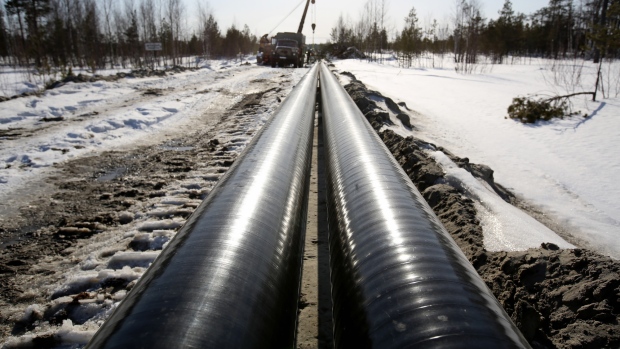Feb 18, 2019
Oil reaches three-month high on supply curbs, trade hopes
, Bloomberg News

Oil advanced to the highest in almost three months as the world’s biggest economies prepare to continue negotiations this week after President Donald Trump was said to consider pushing back the deadline for tariff hikes.
Futures in New York on Monday rose to the highest intraday level since Nov. 20, after advancing 5.4 per cent last week. The U.S. and China sent signals after last week’s talks in Beijing that the two sides may be approaching a deal, raising hopes that the nations’ trade war will ease. Prices were also supported as Saudi Arabia pledges to cut its crude output beyond the level agreed with OPEC+ producers.
"OPEC+ supply cuts are in the driving seat of further recovery in oil prices with Saudi Arabia leading by example," said Giovanni Staunovo, a commodity analyst at UBS Group AG in Zurich. The tightening market is also getting support from a steep decline in production by producers Libya, Iran, and Venezuela, which has been excluded from OPEC cuts, according to Staunovo.
Saudi Arabia and other members of the Organization of Petroleum Exporting Countries have made a strong start to their production cuts while Russia is accelerating its curbs, pushing crude about 23 per cent higher this year. Supply is also being threatened because of American sanctions against Venezuela and Iran. Reports that the U.S. and China had reached consensus in principle on the main topics in their trade negotiations helped boost investors’ risk appetite.
“Saudi Arabia seems willing to do whatever is necessary to reach levels of US$80 a barrel, and judging by the price reaction, they’re on track,” said Eugen Weinberg, head of commodities research at Commerzbank AG in Frankfurt. “Even rather bearish factors, like a stronger-than-expected rise in U.S. oil production, does not seem to derail the price recovery.”
Rising U.S. oil exports are presenting a strong challenge to OPEC+ producers in Asia. India’s biggest refiner signed its first annual contract to buy 2 million tons of U.S. crude for the year starting April, according to a statement from Indian Oil Corp. on Monday. A weakening performance of West Texas Intermediate against other global markers, Brent and Dubai, is making U.S. crude shipments more competitive.
West Texas Intermediate for March delivery rose 47 cents to US$56.06 a barrel before a 1pm trading halt on the New York Mercantile Exchange. Transactions will be booked Tuesday for settlement because of the U.S. President’s Day holiday. Prices last week posted their biggest gain in more than a month.
Brent for April settlement was at US$66.47 a barrel, up 22 cents, on the London-based ICE Futures Europe exchange, after gaining 6.7 per cent last week. The global benchmark crude’s premium over WTI for the same month narrowed to US$10.01, after widening to the biggest spread in more than three months on Friday.
Conciliatory signals from the world’s two biggest economies are calming fears Washington will ratchet up tariffs on Chinese goods before a March 1 deadline. “Big progress being made on soooo many different fronts!,” Trump said on Twitter Sunday.
Worries about the trade war worsening a global slowdown are receding, giving investors confidence that oil demand won’t be affected. China’s credit growth helped ease worries of a slowdown in the biggest regional economy.
Other oil-market news: Gasoline futures fell 0.2 per cent to 1.5695 a gallon. Indian Oil Corp.’s debut annual term contract to import U.S. crude shows how American supplies are continuing to make inroads into the fastest-growing regional energy market. For the first time this year, a jump in bets that Brent crude prices will rise far surpassed the move by short-sellers, and the sentiment is now the most bullish since late October.





